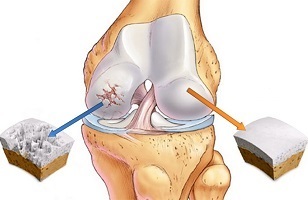
Knee joint arthritis is one of the most common joint diseases, which is second only to arthritis in terms of disease severity.
According to the latest research, the disease affects one in five adults on the planet. In the material, we will tell you the symptoms of the disease and how to treat it properly to avoid complications.
Reason
Every day, a person’s knee joints are under pressure because the exercise performed while walking can bear the entire weight. Over time, the cartilage will wear out, causing joint changes. For this reason, older people may experience arthritis of the knee joint.
In addition, there is a risk group, which includes people:
- Overweight;
- Suffering from osteoporosis;
- has a genetic disease;
- The elderly;
- Work in a specific profession with heavy work;
- Suffering from metabolic diseases;
- Lack of trace elements in the body;
- With spinal cord injury;
- Athlete.
It should be remembered that the development of this disease is quite slow. If the main symptoms are found, it is very important to consult a doctor in time.
This can avoid complications such as disability in the future.
Knee symptoms
To find out the disease, just pay attention to the symptoms-they are common in arthritis. These include:
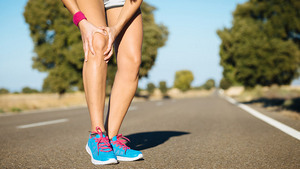
- Pain or discomfort after going to bed (or when trying to get up after sitting for a long time).
- Standing for a long time can cause knee pain.
- When climbing stairs-burning sensation.
- Night pain or discomfort after exercise.
- The lower limbs feel weak and "flexed. "
One of the most important symptoms is pain and tingling in the knee area.
At the same time, the disease itself does not appear "suddenly": the sensations may last for months or years, and at first they will only be annoying as the load increases, and then they will feel pain even when resting.
But it’s worth remembering that the symptoms vary according to the severity of the disease.
Let's take a closer look at each option.
My degree
This degree of arthritis has almost no symptoms, but there are many factors that characterize the disease at this stage:
- The feeling of tired limbs;
- Decreased mobility, usually after sleep.
If there is pain, it is almost invisible. It is difficult to diagnose this disease at this stage, so you can't live without X-rays: arthritis manifests itself as tiny irregularities on the surface of tissues and bones.
Level II
At this stage, the symptoms are more severe. Even a slight load on the leg can cause pain, and over time, this sensation can occur with simple movements. The discomfort will disappear after a long period of rest.
In addition, symptoms such as:
- Tighten when moving;
- Changes in joint bones;
- Synovitis;
- Unable to bend the leg.
III degree
This degree is characterized by severe pain, no longer dependent on load: even at night without any exercise, the joints will be disturbed.
Mobility is also impaired-a person cannot bend his leg on the knee. There may also be weather sensitivity.
Principles of diagnosis and further treatment
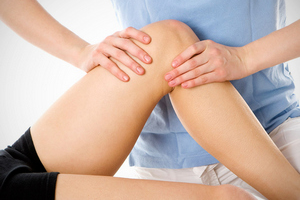
After listening to the doctor, the doctor will examine the appearance of the knee and evaluate its mobility. After that, the patient will be sent for an X-ray examination and several images can be taken during the treatment, which will help assess the dynamics of arthritis development. In some cases, MRI or tomography is required.
If research is needed to correctly identify the root cause of arthritis and distinguish it from other diseases with similar symptoms.
Processing usually includes the following:
- Medication.
- Massage and manual therapy.
- Surgical intervention.
- Exercise therapy and other rehabilitation therapies.
The main goals of treatment are as follows:
- Eliminate pain;
- Ligament repair and cartilage destruction;
- Increased the range of joint motion.
Massage procedures, physical therapy and even proper nutrition are also important. If you go to the doctor too late or none of the above methods can help you, you need surgery: install an endoprosthesis.
Treatment of arthritis-choice of methods and means
At present, in the initial stage, the following types of drugs are prescribed for the treatment of arthritis:
- NSAIDs-non-steroidal anti-inflammatory drugs;
- Cartilage protection agent;
- ointment;
- Compressor products.
NSAID aims to eliminate pain and inflammation. And only after the pain syndrome is relieved can further treatment be started.
If the use of non-steroidal drugs does not show any effect, especially if the disease is only progressing, doctors usually prescribe hormone drugs.
However, it is worth remembering that due to many side effects, such drugs are only prescribed during the illness-if fluid accumulates in the joints. The solution is injected no more than once in 10 days.
The only drugs that directly affect the cause of arthritis are chondroprotectants. They are particularly effective in the early stages.
Also in the early stage, the hyaluronic acid injected into the joints is very effective. This process is not the cheapest, but it helps to grind the cartilage surface.
When arthritis is detected, ointments are also prescribed-they can also reduce pain and eliminate inflammation.
How traditional medicine can help
It should be said immediately that you should not only use traditional medical methods-only use them as a supplement to medical treatment.
Let's look at some things that can help knee joint disease:
Dandelion flower
You only need to eat 5 dandelion flowers a day, please rinse with boiling water. You can also make tincture: take 5 dark glass bottles, fill 50% of the flowers, and then fill the container to the neck with triple cologne. Stick to it for a month, and then wipe the knee with an infusion.
Grinding
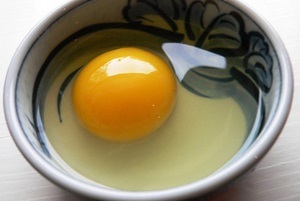
This is a compound that must be rubbed into the knee joint regularly.
Making this composition is very simple: take the egg yolk and mix it with 1 tablespoon. l. Turpentine, add 1 teaspoon. Apple cider vinegar. All ingredients must be mixed and left overnight.
Lubricate your knees every night and put a woolen scarf on it.
Also, it is very important to wash off the applied mixture thoroughly in the morning. To relieve symptoms, you should use this method for 2-3 weeks.
cattle d
According to the folk effect, you need to attach 3-4 large cattle leaves to the sore knees and wrap them with a bandage. Repeat this operation for at least a week to relieve pain. To enhance the effect, you need to lubricate the joints with Wugui oil.
Celandine juice
Moisten a cloth with juice and place it on the affected knee. After an hour, scrub with vegetable oil. Repeat the process for a week.
Dissecting plant roots
Pour 2 tablespoons. l. It means, pour it into a thermos, pour 1 liter of boiling water, and leave it for two hours. Keep warm at least 3 cups a day.
Choosing knee pads for arthritis
It is usually recommended to use special knee pads to relieve the joint discomfort of the knee joint, which can not only reduce the discomfort, but also have a therapeutic effect. Generally, you will see the following improvements when used in a short period of time:
- Reduced inflammation process;
- The edema disappeared;
- Relieve pain;
- Reduce joint pressure;
- The work of the musculoskeletal system has stabilized.
It is very important to choose the correct model to be effective when worn. To this end, we first study what type of knee pads:
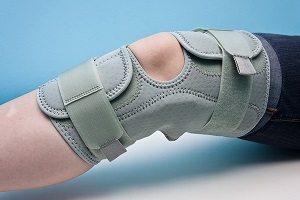
- Open.It is essential for people who feel pain after suffering any form of injury or minor pain.
- Elastic products with reinforcing ribs. This type of knee pad is more suitable for those who feel pain when squatting or going up and down stairs.
- OpenAdjustable knee pads. Such products are ideal after surgery.
- Closed type-If the source of pain is not clear, that is, it is not concentrated in any specific location, use them. Allows you to minimize the pressure on the joints.
- The magnetic appearance of knee padsis characterized by the presence of special magnets, which have a warming effect and improve blood circulation.
- Articulated.is considered a general option. Used to minimize injury and pain after arthritis.
In addition to the type, the material of the knee pad must also be considered. Therefore, such items can be made from:
- Animal fur.These products can warm, absorb water, reduce inflammation and improve blood circulation in tissues.
- Polyester.Knee pads made of this man-made fiber are very comfortable and reliable, but they do not generate heat and are expensive.
- Cotton.Wear-resistant and waterproof. Yes, it also has disadvantages: lack of flexibility and fragility.
- Nylon.Knee pads made of this material are considered the most durable and very suitable for the body. But there is also a negative sign-this is a man-made material.
- Neoprene.Although it is a man-made fabric, this material is elastic and warm. There is also a disadvantage-wearing this kind of knee pad can cause allergies.
But it is important not only to choose the right knee pads, but to use them. The doctor made some important suggestions:
- The wearing time shall not exceed three hours per day;
- The length of wearing depends on the degree of joints-the doctor will inform you in detail;
- If you have an allergic reaction, you need to consult a doctor urgently, who will prescribe another bandage;
- It is impossible for the agent to squeeze the joints strongly;
- Wash the knee pads by hand, and the water temperature should not exceed +40 degrees.
In short, it must be said that one should not neglect a healthy lifestyle-in this case, the body will play its due role. If you feel joint pain, you need to consult a doctor urgently to make a correct diagnosis.

























